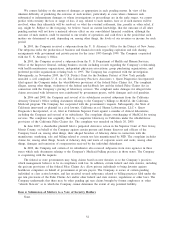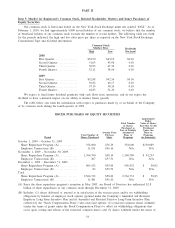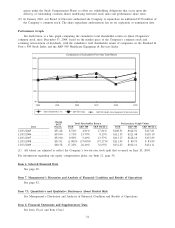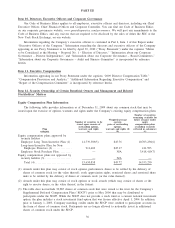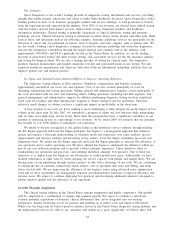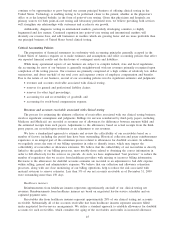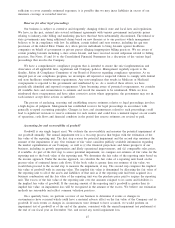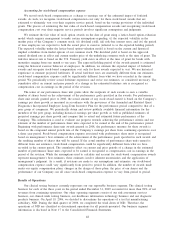Quest Diagnostics 2009 Annual Report Download - page 52
Download and view the complete annual report
Please find page 52 of the 2009 Quest Diagnostics annual report below. You can navigate through the pages in the report by either clicking on the pages listed below, or by using the keyword search tool below to find specific information within the annual report.QUEST DIAGNOSTICS INCORPORATED AND SUBSIDIARIES
MANAGEMENT’S DISCUSSION AND ANALYSIS OF FINANCIAL CONDITION
AND RESULTS OF OPERATIONS
Overview
The Clinical Testing Industry
Clinical testing is an essential element in the delivery of healthcare services. Physicians use laboratory tests
to assist in the detection, diagnosis, evaluation, monitoring and treatment of diseases and other medical
conditions.
Most laboratory tests are performed by one of three types of laboratories: commercial clinical laboratories;
hospital-affiliated laboratories; or physician-office laboratories. In 2009, we estimate that hospital-affiliated
laboratories accounted for approximately 60% of the market, commercial clinical laboratories approximately one-
third and physician-office laboratories the balance.
Orders for laboratory testing are generated from physician offices, hospitals and employers and can be
affected by a number of factors. For example, changes in the United States economy can affect the number of
unemployed and uninsured, and design changes in healthcare plans can affect the number of physician office and
hospital visits, and can impact the utilization of laboratory testing.
While the recent economic slow down in the United States may temporarily reduce industry growth rates,
we believe the clinical testing industry will continue to grow over the long term because clinical testing is an
essential healthcare service and because of the following key trends:
•the growing and aging population;
•continuing research and development in the areas of genomics (the study of DNA, genes and
chromosomes) and proteomics (the analysis of individual proteins and collections of proteins), which is
expected to yield new, more sophisticated and specialized diagnostic tests;
•increasing recognition by consumers and payers of the value of laboratory testing as a means to improve
health and reduce the overall cost of healthcare through early detection and prevention;
•increasing affordability of, and access to, tests due to advances in technology and cost efficiencies; and
•the growing demand for healthcare services in emerging markets and global demographic changes.
The diagnostic testing industry is subject to seasonal fluctuations in operating results and cash flows.
Typically, testing volume declines during the summer months, year-end holiday periods and other major holidays,
reducing net revenues and operating cash flows below annual averages. Testing volume is also subject to declines
due to severe weather or other events, which can deter patients from having testing performed and which can
vary in duration and severity from year to year.
Healthcare Reform
Government oversight of and attention to the healthcare industry in the United States is significant and
increasing. The 2009 American Recovery and Reinvestment Act included laws designed to expedite the
implementation of electronic health records and build a national electronic health infrastructure in the United
States. In addition, there has been extensive discussion of U.S. federal legislation to reform healthcare. It is not
possible to predict whether U.S. federal legislation to reform healthcare will be enacted, or the nature or impact
of any such legislation.
Reimbursement for Services
Payments for clinical testing services are made by physicians, hospitals, employers, healthcare insurers,
patients and the government. Physicians, hospitals and employers are typically billed on a fee-for-service basis
based on negotiated fee schedules. Fees billed to healthcare insurers and patients are based on the laboratory’s
patient fee schedule, subject to any limitations on fees negotiated with the healthcare insurers or with physicians
on behalf of their patients. Medicare and Medicaid reimbursements are based on fee schedules set by
governmental authorities.
Government payers, such as Medicare and Medicaid, as well as healthcare insurers and larger employers,
have taken steps and may continue to take steps to control the cost, utilization and delivery of healthcare
services, including clinical testing services.
42


